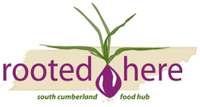The Weblog

This page contains news, event information, and other items added by the market managers.
"Solving Local"
This post expired on March 24, 2024.
New Food Hub Report Targets Wholesale Buyers
“Food Hubs: Solving Local” offers solutions for retailers and food service.
Groceries and food service companies nationwide are finding the best way to meet consumer demand for local food is by teaming up with regional food hubs.
These small-farm aggregators — more than 200 across the country — are the solution both to scaling up local food and ensuring its integrity.
That’s the key takeaway from a new Wallace Center resource designed to introduce a broader food industry audience to regional food hubs. <ngfn.org/solvinglocal>
“The report shows how wholesalers can partner with food hubs on programs to pull consistent volumes of safe, locally sourced food products through the supply chain,” explains John Fisk, director of Wallace Center at Winrock International. “Food hubs are developing into linchpins of regional food system infrastructure. Solving Local is a complementary effort to engage more food retailers and distributors in the business of ‘good food:’ Healthy for the body, green for the planet, fair for workers and affordable for everyone.”
Solving Local presents five case studies showing how larger scale buyers team up with hubs to get products from small farms and other food businesses into high-volume supply chains. As “good food” middlemen, food hubs enable buyers to satisfy consumer demand for food that generates economic, social, and environmental returns to farmers and their communities.
SOLVING LOCAL introduces these five established food hubs:
Red Tomato: This food hub lines up the supply, logistics, and marketing for branded local food programs featuring products from a network of farms in the Northeast.
Good Natured Family Farms: Operating out of a regional grocery chain’s warehouse, this branded alliance of 150 farmers supplies metropolitan Kansas City and beyond.
La Montanita Cooperative Distribution Center: This distribution arm of a retail grocery cooperative uses its Organic Valley routes to open markets for New Mexico producers from Albuquerque to Connecticut.
Cherry Capital Foods: The Michigan logistics company leverages accounts with Kroger and Chartwells to build statewide routes that connect demand and supply.
Common Market: The Philadelphia distributor brings wholesome food to the inner city and Mid-Atlantic region by linking area farms with small food service accounts.
More than 200 food hubs now operate across the country with an average of $3 million in revenue last year, according to the 2013 national survey by Michigan State University and Wallace Center. Each works with an average of 80 small to medium size farms, generating real returns to communities and delivering the transparency and benefits consumers want.
“At the Wallace Center our goal with Solving Local is for retail buyers and food distributors to take the next step and start or expand a food hub relationship,” Fisk says. “We want to build partnerships to grow this economy. Equally important is ensuring the marketplace’s understanding and adoption of ‘good food’ values that are embedded in demand for ‘local.’”
The Wallace Center and National Good Food Network invite you to join in growing and promoting the business of good food. Share Solving Local with your networks, and learn more at .
Support your local food hub- the South Cumberland Food Hub- and join the local food movement in your community.
